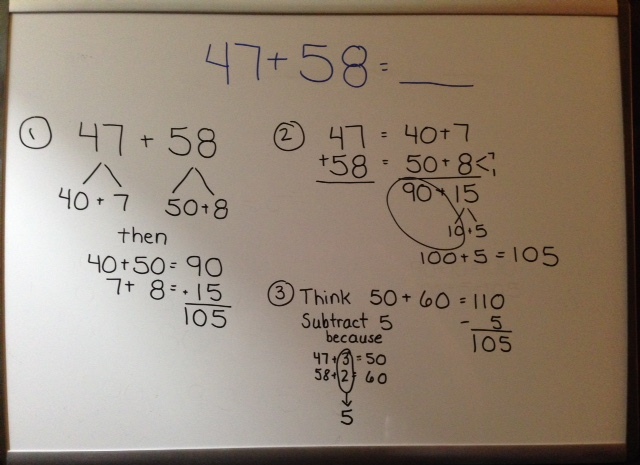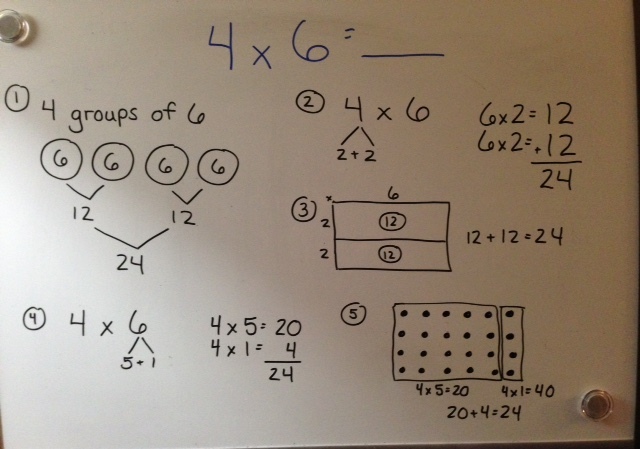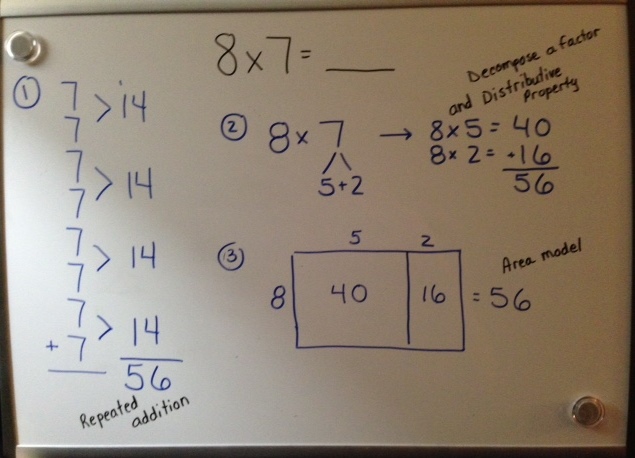by Cindy Elkins, OK Math and Reading Lady
This is the Part 3 of Number Talks.  If you are just tuning in, please refer to NT Parts 1 and 2. As I mentioned before, conducting a Number Talk session with your students is a chance for them to explain different ways to solve the same problem. This is meant to highlight strategies which have already been taught.
If you are just tuning in, please refer to NT Parts 1 and 2. As I mentioned before, conducting a Number Talk session with your students is a chance for them to explain different ways to solve the same problem. This is meant to highlight strategies which have already been taught.
Click below to watch 2 videos of how to conduct a Number Talk session with intermediate students. You will see many strategies being used.
Number Talk 3rd grade 90-59 = ____
Number Talk 5th grade 12 x 15 = ___
Addition and Subtraction Strategies: I like using the methods listed below before teaching the standard algorithm. This is because they build on a solid knowledge of place value (and number bonds 1-10). If your students are adding and subtracting using the standard algorithm and can’t adequately explain the meaning of the regrouping process in terms of place value, then try one of the following methods. In many cases, I will ask a student the meaning of the “1” that has been “carried” over in double-digit addition. About 85% of the time, the student cannot explain that the “1” represents a group of 10. When adding the tens’ column, they often forget they are adding groups of 10 and not single digits. So they get caught up in the steps and don’t always think about the magnitude of the number (which is part of number sense). You will notice teachers write the problems horizontally in order to elicit the most strategies possible.
- Partial Sums
- Place Value Decomposition
- Expanded Notation
- Compensation
- Open Number Line (to add or subtract)
Here are some possible Number Talk problems and solutions:
- Notice use of place value and number bonds.
- These methds build strong number sense.
- I call this “Facts Of.” You can use any number.
Multiplication and Division Strategies: I like using these methods before teaching the standard algorithms. Again, they build a solid understanding of place value, the use of the distributive property, and how knowledge of doubling and halving increases the ability to compute problems mentally. Once these methods have been learned, then it is easy to explain the steps in the standard algorithm.
- Repeated Addition
- Area Model
- Partial Products
- Distributive Property
- Doubling and Halving
- Partial Quotients
Here are some possible Number Talk problems and solutions:
- Use the known (6 x 2) to learn the unknown problem.
- Use the distributive property!
- To divide by 4, halve the number twice. To divide by 8, halve the number 3 times.
Enjoy your Number Talks!!





